High-density polyethylene (HDPE), especially corrugated ones, has quickly found its way into almost all modern-day construction works because of its flexibility, strength, and low cost. This treating blog would like to detail the various piping systems, including their uses, advantages, and reasons for their preference over conventional piping systems. If civil engineering construction, agricultural drainage, or stormwater systems management is your concern, knowing the characteristics and advantages of corrugated HDPE pipe would help you. Starting with installation tips and maintenance approaches, this article offers you knowledge on essential amenities concerning this novel construction technology that perhaps most guides elsewhere do not provide.
What is a Corrugated HDPE Pipe?
hdpe corrugated pipe
A Corrugated High-Density Polyethylene pipe (HDPE) is a type of piping that uses plastic that contains high-density polyethylene. Despite its reinforced ridges, which house the high-density polyethylene (HDPE), this type of pipe is expected to offer high resistance to rocks, corrosive substances, and even the harshest weather conditions. Its lightweight enables easy handling and fitting, thus avoiding extensive usage in stormwater systems, drainage, and agricultural practices. Corrugated HDPE pipes are also lightweight and affordable, resulting in a drastic decrease in transportation and labor costs compared to using materials like concrete and metal. The materials’ long lifespan and strength make them attractive to most customers, as they can last for 50 to 100 years with minimal maintenance.
Understanding HDPE and Its Benefits
High-density polyethylene (HDPE) is a type of thermoplastic polymer that exhibits a high strength-to-density ratio, which is why it is preferred in piping solutions among many other applications. HDPE is derived from petroleum, which means it is inert and does not give in to many solvents, inflicting less environmental damage and thereby increasing its lifespan. Its ability to withstand extremely low and high temperatures without rotting or rusting makes it fit for long-term use.
Among the most significant pros of HDPE is its excellent impact resistance and elasticity, which allow several operations to be done more readily than if stiffer materials such as PVC or metal were used instead. This brought about the tendency to bend the material to follow the terrain, which diminished the requirement for extra fittings. In addition, HDPE pipes can be appropriately fused using heat fusion, which forms a watertight connection and minimizes the chances of contaminating fluid substances, which is paramount in water and sewage schemes.
Technical Characteristics of the HDPE:
- Density: 0.93 to 0.97 g/cm³
- Tensile Stress: 3.800 to 4.800 psi
- Temperature Range: -40-70 degrees Celsius.
- Environmental Stress Crack Resistance (ESCR): A minimum of 1,000 hours.
- Impact Resistance: High impact resistance at ambient temperature.
These attributes reinforce the view of HDPE as environmentally friendly due to its propensity for recycling and as a material that guarantees efficiency and reliability for infrastructural development. Knowing these parameters, civil engineers and project managers will be able to evaluate the performance characteristics of HDPE pipes based on the specific requirements of the projects to be carried out effectively and sustainably.
Types of Corrugated Pipe Available
Due to their bidirectional qualities of flexibility and strength, corrugated pipes are increasingly used in drainage and sewerage systems. The most common types of corrugated pipes include the following:
1. Corrugated Steel Pipe (CSP): This type is preferred for construction and heavy-duty use, including roads and bridges. It has a heavy load-bearing capacity and high resistance to corrosion and wear and tear, making it applicable in highly abrasive environments.
- Technical Parameters:
- Coating: Additional coating utilized may be either galvanized or polymer.
- Load Capacity: Depends on diameter and wall thickness.
- Longevity: Life can go over 75 years under appropriate maintenance.
2. High-Density Polyethylene (HDPE) Corrugated Pipe: These HDPE corrugated pipes can more effectively manage stormwater and other systems because they are lightweight, do not corrode, and are not stiff, rigid structures. Thus, they are installed with more ease than rigid pipes.
- Technical Parameters:
- Diameter: The normal range expected is between 100mm and 1500mm.
- Load Rating: These are classified under SN4 and SN8 stiffness ratings.
- Temperature Resistance: Between -40 Degrees Celsius to 60 Degrees Celsius.
3. Polypropylene (PP) Corrugated Pipe: Low-pressure drainage works employing these low-pressure corrugated pipes are common. These pipes have exceptional chemical resistance and are ideal for disposing of industrial waste. PP pipes are well known for their impact resistance and flexibility.
- Technical Parameters:
- Flexural Modulus: Less than this one generally improves the stiffness since it is less than the hdpe itself.
- Chemical Resistance: These pipes are too much resistant to a wide variety of chemicals.
- Service Life: Normally does not exceed 100 years.
These corrugate pipes comprise different construction materials and specific technical parameters that determine their optimal utilization and performance. Weiqi and Jenni obtain the inferred consent differences selectively, highlighting differences in fabric and helping illustrate these differences in selecting a particular type for a specific project.
Applications of Corrugated HDPE Pipe
Compressed HDPE pipes are primarily used in many areas because of their flexibility and strength. Below are the culprits of some regular regions of application and their technical parameters:
- Stormwater drainage: One system that utilizes HDPE pipes extensively is stormwater drainage systems, which demand high water flow and require low maintenance in terms of corrosion. Since the HDPE pipes are flexible, they can take the change in the pressure of soil and water within them without any breakage.
- Agricultural drainage: In agriculture, HDPE pipes are used in the drainage layer of the ground, called subsurface drainage systems. These systems remove excess water from the soil, increase crop production, and stabilize the soil. They are also favorable in that they are light and easy to install, making them very effective in large-scale farming.
- Retaining wall drainage: HDPE pipes are used in retaining walls mostly to deal with the problem of water pressure building on the wall. They have good strength-to-weight ratios and quickly move away from the water, preventing the risk of structural failure.
- Landfill Drainage Systems: Due to their ability to withstand chemicals and impact, High-density polyethylene pipes are primarily utilized in waste management leachate collection systems to ensure that the environment is well protected and that the system is intact throughout its lifespan.
Technical Parameters:
- Diameter: This can be significantly adopted in diameters, offering solutions in various capacities and carrying areas.
- Load Rating: Different stiffness pipes, such as SN4 and SN8, are available, having different load-bearing capabilities.
- Working Temperature Range: These products can work in environments with temperatures ranging from negative 40º C to positive 60º C, thus enabling their usage across different climatic conditions.
The properties of the above HDPE pipes contribute to the effective functioning of drainage and water management systems, employing their useful technical characteristics.
How to Install Corrugated HDPE Pipe?
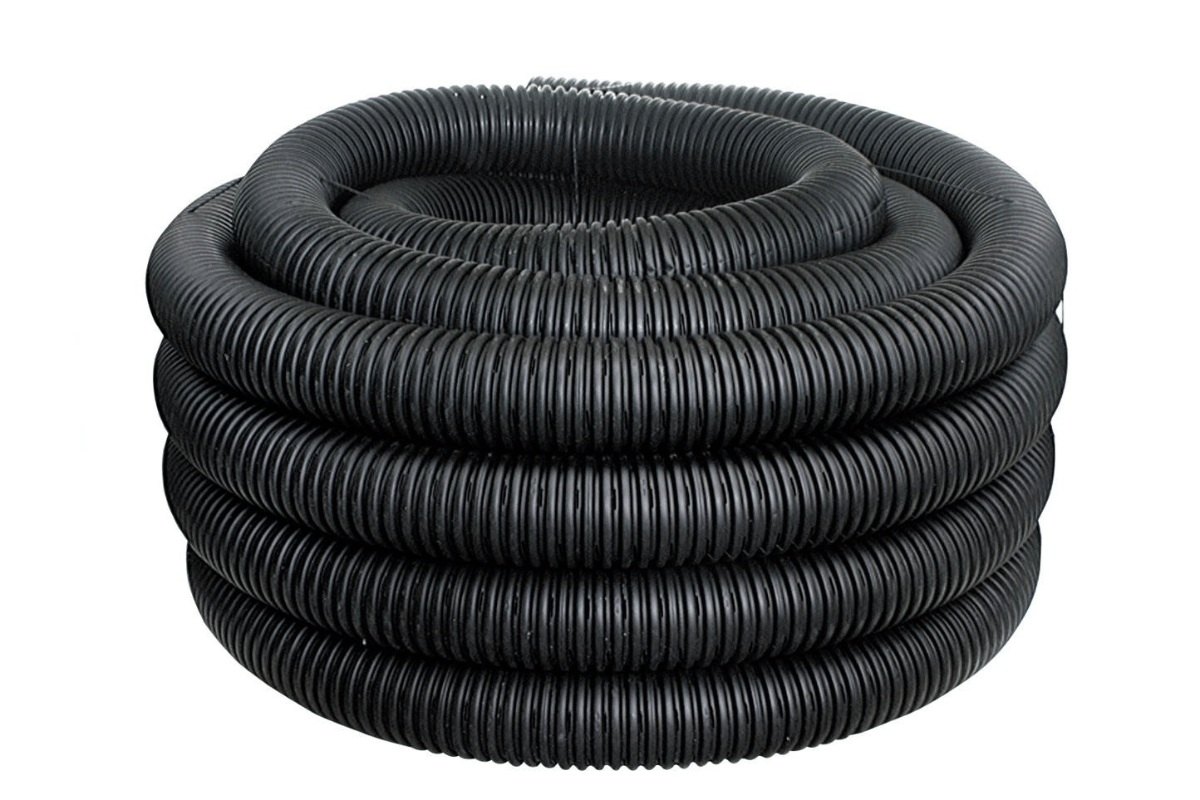
There are several simple steps to installing corrugated HDPE pipes that guarantee the efficient use of the pipe over an extended period. First prepare the trench, in this case, hold back and, make it deep and wide enough to accommodate the pipe comfortably and provide stable support. Within context, an adequately compacted soil bed is highly critical during installation as it provides enough support to prevent the occurrence of sagging or distortion at a later time. Then, proceed to unroll the HDPE pipe along the trench, which has a low chance of developing sharp bends or kinks. Secure and leakproof jointers, such as unsightly HDPE couplings or snap-on HDPE fittings, are highly recommended whenever more than one section of the pipe is joined together. Consequently, the trench is filled back either with the soil dug out in the earlier stages or any other appropriate material, and this is done without pressing or damaging the pipe fixed in place. Sufficient backfilling ensures the pipes are positioned and functional for different load conditions.
Installation Guidelines and Best Practices
The correct steps and specific procedures must be followed when installing corrugated High-density polyethylene (HDPE) pipes to ensure that the structure remains intact and functional for an extended period:
- Site Preparation: Ensure that the trench’s width and depth are as per the requirements. As PlumbingSupply and Contech Engineered Solutions explain, this preparation is necessary so that support and settling do not cause problems. The trench should be wide enough to allow for proper placement and backfilling.
- Bedding and Backfill Materials: According to the National Corrugated Steel Pipe Association specifications, secure the pipe with bedding material such as pea gravel or sand. This layer also acts as a cushion for the pipe against excessive pressure or movement.
- Joint Connections: As the manufacturers state, connect pipe joints using properly fitted couplings or fittings. Advanced Drainage Systems recommends snapping-together and gasketed joints to enhance leak-proof joints.
- Backfilling Process: The excavation should be refilled with the chosen material, and the trench compacted as required. A careful compacting technique is essential to avoid load-bearing distortion of the pipe, which is in line with the American Water Works Association’s observation.
- Inspection and Testing: Following the installation of the pipe, the plumbing system should be checked for any misalignment or miscoupling of the joint. Leak Testing: To eliminate leakage, water pressure above what is usual in the system should be controlled in compliance with the ISCO Industries recommendations.
When these measures and best practices are adhered to, effective installation of corrugated HDPE pipes will occur, and performance will be sustained for an extended period.
Common Installation Mistakes to Avoid
Several common mistakes could compromise the quality of the whole installation as well as the system’s efficiency and durability: Ali:
- Poor Trenching: One such mistake is the lack of proper trench digging. This slanting support leads to stress and eventually causes sagging. Thus, ensure that there is a stratum to which the trench is consistently excavated in the width and depth as stipulated.
- Poor Usage of Bedding Materials or Backfilling Materials: The pipe may fracture or be displaced due to the wrong bedding material choice or lack of proper backfill compaction. To achieve the proper cushion, use pea gravel or sand for bedding, as recommended by industry standards.
- Improper Installation of Joints: Even the best joint assembly does not guarantee a leakage-free system since misplaced and poorly secured joints initiate leakages. Employ appropriate couplings and fittings for all joints in pipelines, and make sure they are well secured, not lateral welds. This shields the bamboo from moisture and thus prevents rot in high humidity.
- Insufficient Observation and Earthworks Under-Pressure: One more critical error is the absence of pressure tests and visual observations of the joints after the backfilling trench. Always make sure that this is done to prevent problems.
While best practices include legitimate recommendations and while there are ways to avoid most unpleasant situations, these common pitfalls should not be neglected as they promote more satisfactory and conforming installation to the practitioner level.
Necessary Tools and Materials for Installation
The installation of a pipeline needs the selection of suitable tools and materials in advance to avoid any form of waste or inaccuracy. Based on leading resources in the field, the following are critical items required:
- Excavation Equipment: When making trenches, use caterpillars, trenching equipment, or mini excavators suitable for the required length and depth.
- Laser Level or Transit: Maintaining the proper grade is essential in the word laying the pipe, and this can, therefore, be achieved by using a leveling device fitted with an interchange.
- Bedding Material: Proper bedding of the pipes with either pea gravel or coarse sand is vital to reduce the chances of damaging them once they are put in place.
- Pipe Cutters and Joiners: Elbow joints should also be of high quality; therefore, use pipes manufactured specifically with slip-on barrel joiners.
- Compact Tamper: Backfill tampers are specially designed and built to accurately compact any backfill that exerts pressure on the pipes, preventing unnecessary settling of the piping system after installation.
- Pressure Testing Kit: This should include pressure gauges and pressure caps in the event tests will be carried out to help examine the system after installation, which is critical integrity.
- Personal Protective Equipment (PPE): Helmets, gloves, and protective boots should be worn as a standard measure to prevent risks that may emerge during working conditions.
- Leveling Tools: A spirit and dumpy levels help achieve a uniform surface level on the trench over its length.
Such tools and materials are integral in the successful installation process because of established technical requirements and policies on environmental issues. Observe the compatibility of the tools and materials with the project.
What Are the Specifications for Corrugated HDPE Pipe?
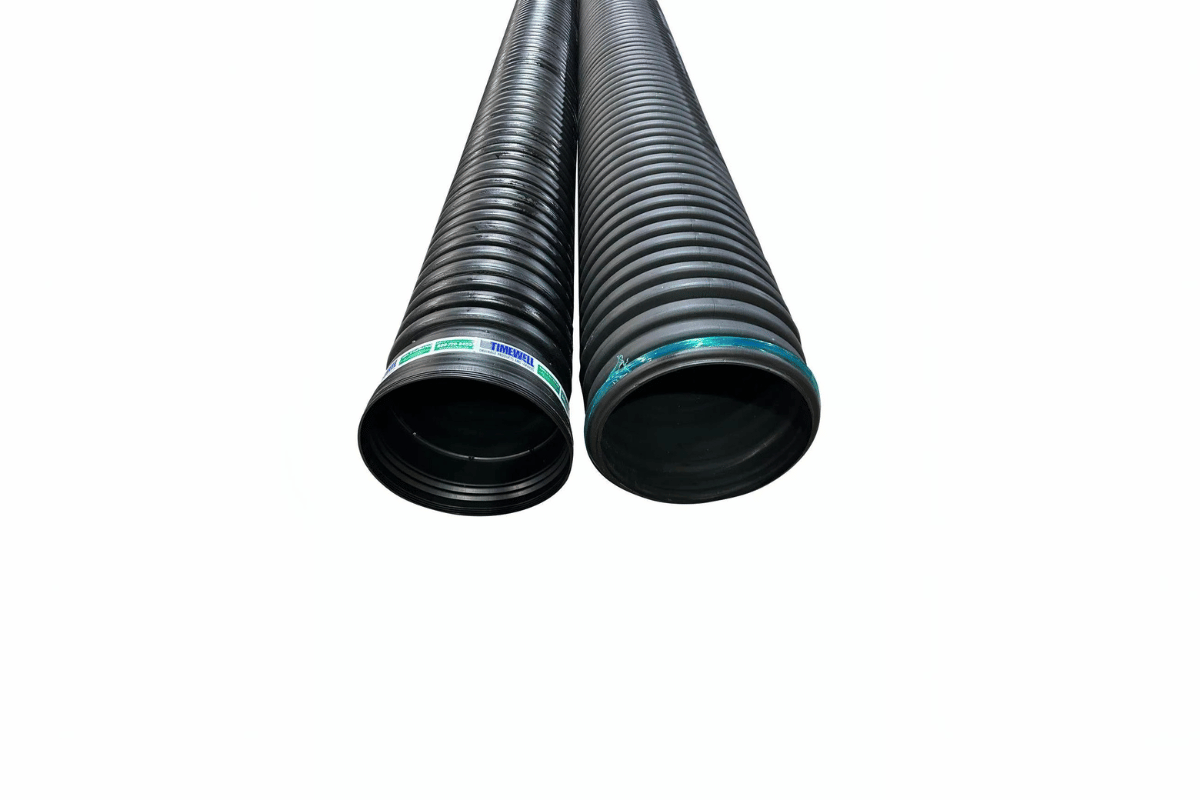
The specifications of corrugated HDPE pipes may vary depending on the manufacturer and the application. Usually, these pipes are for various diameters, including the most common range from 3 to 60 inches. They comply with designated standard specifications for the smaller diameter pipes, i.e., ASTM F405 and F667, and for the larger pipes, ASTM F2306 and M294, for performance and safety standards. The pipes are made to specified lengths to help with transportation, handling, and placement. Furthermore, using corrugated HDPE pipes with dual wall configuration is quite common daily, such as a configuration with a smooth inner surface to promote efficient flow and construction of external ribbing for strength and durability. The material is also very resistant to various chemicals and corrosion, making it ideal for many uses, such as drainage, agriculture, and stormwater.
ASTM and AASHTO Standards
While completing any type of work on corrugated HDPE pipes, it is critical to understand the need to comply with and fulfil the requirements of the top recognized standards.
- ASTM Standards: ASTM F405 and F667 come in handy for pipes of smaller diameter as they ensure that the pipes are designed to criterion in material properties, dimensions, and durability. There are national standards for other bigger diameter pipes: AASHTO F2306 and AASHTO M294, which apply and state requirements like stiffness strength and water tightness of the pipes. These standards place requirements regarding test methods for structural integrity and environmental resistance.
- AASHTO Standards: The American Association of State Highway and Transportation Officials (AASHTO) includes standards such as AASHTO M252 and M294, which detail all necessary measures in the manufacturing and use of HDEP pipes in the pavement industry. These standards also describe the bearing capacity, manners of usage, and effects of elevated pressures and stresses after prolonged periods, thus giving assurance in situations where the construction of highways and management of stormwater are concerned.
Such documents are substantiated by information from an engineering reference site, guidelines from pipe manufacturers, and construction case studies documenting compliance and the pipes’ ability to meet the required high-tech safety and performance standards.
Diameter and Length Options
They emphasize the need to consider technical and application issues in HDPE corrugated pipes’ diameter and length selection. Some of the information that I gathered from the leading sources on these options is presented below:
1. Diameter Options: Pipes made of corrugated HDPE are considered to provide various diameters depending on the flow rate and use case. For instance, standard diameters include smaller pipe dimensions of 4 inches used for agricultural drainage and pipe sizes of over 60 inches for storm drainage and sewage systems. Using larger diameters helps increase the flow velocity, reducing the chances of clogging and providing adequate water movement.
2. Length Options: These pipes are manufactured in set 20-foot sections for easy relocation and installation. However, some cutting-edge piping projects may require pipes of different unusual lengths while fitting a specific site structure. Length selection is based on the site’s nature, installation equipment availability, and joints.
3. Technical Parameters: Critical technical parameters for HDPE pipe performance include several technical parameters;
- Stiffness: If minimum pipe stiffness is to be achieved, then pipe performances must be set out through a standard dimension ratio that addresses pipe load bearing.
- Strength and Durability: Installations have been made using pipes that conform to the specified tensile and bending strength to bear construction pressures and hostile conditions.
- Joint Integrity: Leak-proof joints are crucial to ensuring the system’s efficiency; for this reason, the ASTM and AASHTO regulations usually state that the joints should be tested under pressure.
Such analyses are in accordance with the industry’s and manufacturers’ requirements, with the aim of providing all-around information necessary to choose the correct pipe sizes for the respective tasks.
Wall Types: Single vs. Dual Wall
In High-Density Polyethylene (HDPE), piping systems generally offer single-wall and dual-wall pipes depending on the needs of the piping section.
- Single-wall Pipes: The overlapping ridged framework provides structural rigidity and bending flexibility. They are perfect for water transportation and other drainage activities that require a light level of water, such as emergency optio designs and natural field irrigation systems. Although light, single-wall pipes do not bear much weight and are only effective for low-load-bearing applications.
- Dual Wall Pipes: They consist of a smooth pipe within a pipe with grooves on the outside to help hydraulic performance. Since friction through this fitting is reduced, water flow through this pipe is optimally efficient. They are more appropriate for plumbing that requires high durability and strength where retention ponds, stormwater drainage, and highway drainage are installed, among other applications. The dual wall ant designs are built to take a higher load and serve longer than the single wall.
Technical Parameters for Wall Types
- Load Capacity: Apart from adding extra attraction elements, dual-wall pipes have thicker walls. Hence more load capacity considering design constraints, which helps in low traffic penetrations.
- Flow Efficiency: Since dual-wall piping contains a smooth inner diameter, there is minimal friction loss in the internal flow of the pipes compared to single-wall piping.
- Installation Considerations: While single-wall pipes allow room for off-center positioning during construction, it is easy to install all dual-wall pipes, which are more challenging to manufacture because of their configuration.
- Durability: Dual-wall pipes are stronger and more resistant to extreme temperature, moisture, and pollution than single-wall pipes if heavy-duty activities are executed.
As illustrated in these features, it is critical to know the factors that help in decision-making when considering single versus dual-wall HDPE pipes for each project.
What Maintenance Is Required for Corrugated HDPE Pipe?
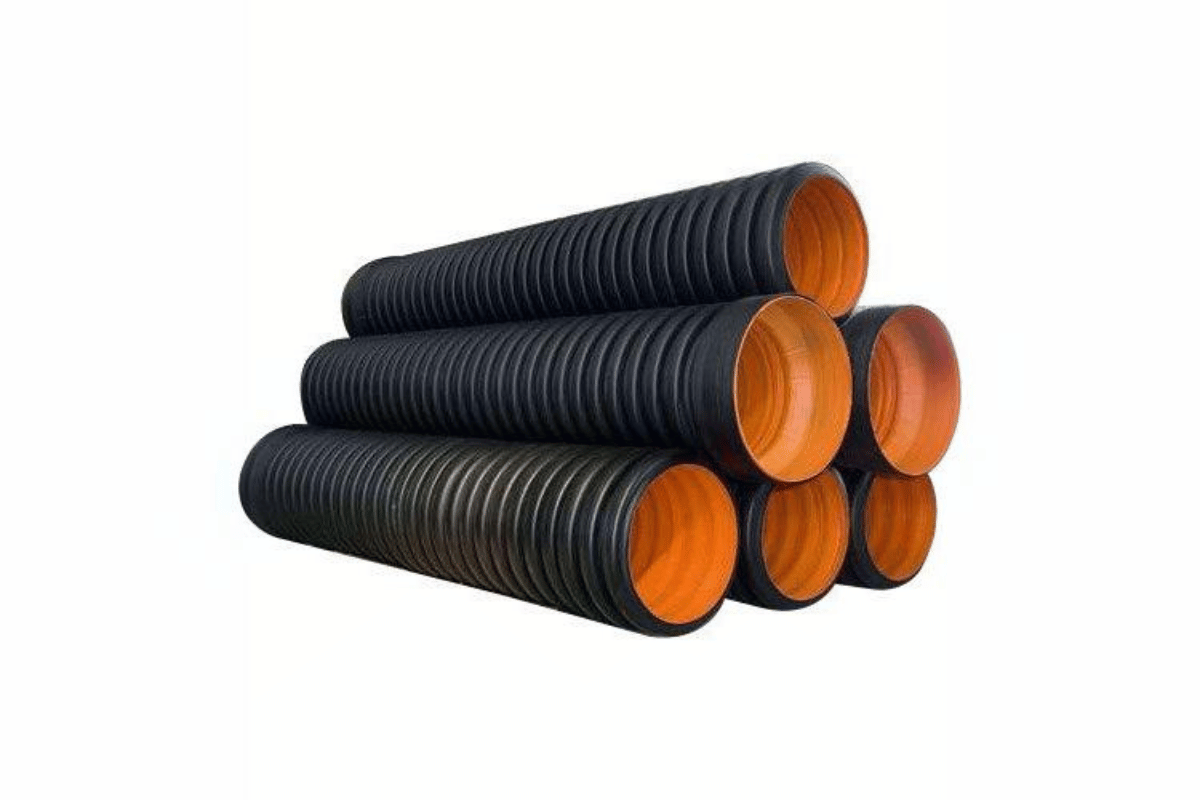
As a result of their resistant construction and wear-proof nature, HDPE corrugated pipes need minimal maintenance. Still, it is advisable to inspect the pipes regularly. These inspections should include cleaning any debris collected, assessing the tightness of joints, and looking for any signs of abnormal wear where necessary, such as where there are submerged deposits or blockages that can affect the flow; the pipe system should be cleaned, usually by flushing or jetting out. Also, it is necessary to check for lateral movement or movement in a vertical direction due to the settling of the pipes, particularly after a heavy downpour or heavy load. Increased regularity of such operations will not be in vain as it will increase the life span of the piping system and help in flow management.
Routine Inspections and Cleaning
As with any other pipeline material, properly caring for corrugated HDPE pipes begins with routine inspections to catch and correct potential problems before they become real. As some leading sources in the industry point out, every schedule of inspections should incorporate annual inspections and more frequent ones depending on weather factors of people or equipment usage. Main inspection points include:
- Joint integrity: Confirm that all pipe joints are fixed, with no noticeable displacement or leakages.
- Sediment and debris (blockages): Check for obstruction or accumulation of sediments or other debris that may interfere with the flow of orifices, which are cleared by high-pressure flushing or jetting.
- Signs of wear: Check for cuts, decomposed areas, or even project wear that needs repair.
Visually assessing the pipe while performing a CCTV survey can facilitate an effective surveying procedure. When the need arises, provide the technical parameters for corrugated HDPE pipes with standards as outlined in ASTM F667 correlating with pipe wall thickness and pipe stiffness conveniently critical for the structural upkeep of the pipe. Organization of these standards aids in improving performance and maintaining the efficiency of HDPE pipe systems in operation. Regular maintenance of a structural support system can also prevent collapse as any sign of potential failure will be detected and repaired, and significant amounts of money would have been lost in capital investments. This helps protect the built infrastructure and keeps them operating at expected levels.
Repairing Damage and Replacing Sections
Before repairing damaged sections of corrugated HDPE pipes, it is usually necessary to carefully evaluate the damage. CCTV inspection can help in the accurate location and identification of the problems. Substance ligament division comprises of the following key steps:
- Damage assessment: The first step is categorizing the damage as surface abrasion, cracks, or joint separation and determining what caused it, be it an external force or an internal blockage.
- Minor repairs: Localized surface abrasions or minor damage can be treated by fluid or external therapy, including HDPE repair patches or HDPE repair tape. Repairing materials must be used, but this will not add to the problems with the HDPE pipes.
- Section replacement: If there are severe damage, removing the affected area and replacing it with a new one may be the answer. In this step, the damaged portion is resected, and a fresh section is attached via coupling bands or welds that comply with the regulations laid down by ASTM F667.
- Ensuring compatibility and longevity: After any section repair or reinstallation, the size, wall thickness, and material properties of the new sections installed should be examined so that maximum system efficiencies are attained and engineering procedures are not breached.
It is essential to perform pressure tests after any repairs or improvements to check whether the work has been successful and that the pipeline operates safely and without leakage.
Expected Service Life and Performance
It is widely accepted that the service life of HDPE pipes with a corrugated structure is relatively high and can even be over 50 years if the conditions are right. This is possible since most of these polymer materials have corrosion, chemical abrasion, and flexibility due to ground displacement resistance. As noted by some authoritative sources, the expected service life of such infrastructure is affected by certain important factors, among them:
1. Environmental Conditions: Constant exposure to extreme conditions, such as UV radiation, can degrade the properties of HDPE pipes over time, although UV-resistant coatings can help reduce this effect. In the same way, aggressive soil or certain types of groundwater would affect such lifespan expectancy; hence, particular kinds of resin grade and protective measures are imperative.
2. Load and Installation Quality: Under- or over-pipe installation is one reason equipment may malfunction before its due time. That is why it is necessary to follow the instructions on the D-valorization of the pipes, which includes exposing such pipes to loads not greater than their design tolerances.
3. Technical Parameters:
- Wall Thickness: The relevant standard, ASTM F667, defines the basic requirements for wall thickness based on constant working pressures on the HDPE structure to render standard structural stability.
- Pipe Stiffness and Flexibility: The parameters determined by a pipe’s ability to withstand certain types of loads without noticeable memory effects and the movement ability of those loads trigger the displacement of the pipe.
4. Maintenance Practices: As mentioned in earlier sections, the intervals between inspections and repair works are important elements of service life extension as they avoid expensive repairs and ensure uninterrupted functionality.
Defining and implementing technical parameters and operational strategies capable of meeting HDPE pipe systems’ operating parameters will result in effective and economical systems within decades of use.
Environmental Impact of Using Corrugated HDPE Pipe
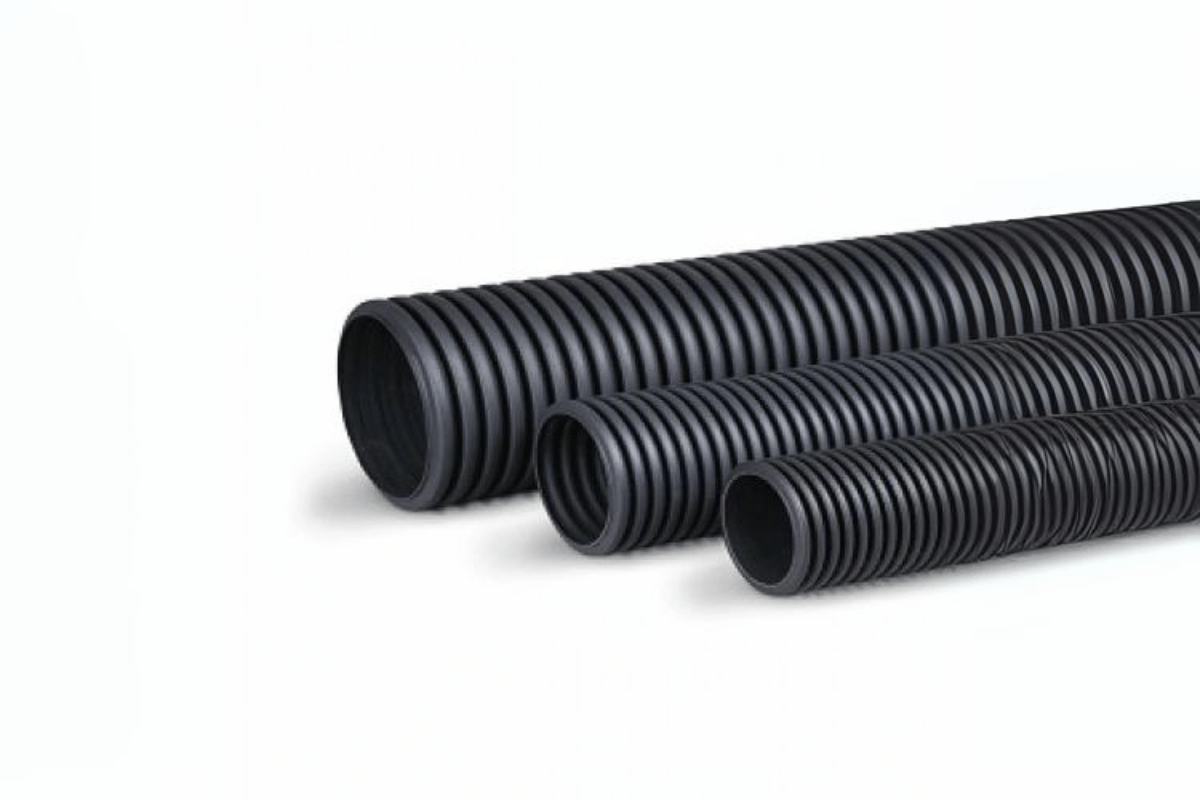
Due to their environmentally appropriate characteristics, corrugated HDPE pipes are appreciated. First, the pipes produced from HDPE materials are recyclable; thus, at the end of their life span, these resources are reprocessed into different products, conserving landfill sites and resources. In addition, both production and installation of HDPE pipes are characterized by low carbon except for uses of materials such as concrete and steel, which are more carbon-intensive because of high energy usage during manufacture and transportation compared to PVC, which is lighter in weight. In addition, the corrugated HDPE pipes are long-lasting and, therefore, do not require frequent replacement, which otherwise would lead to more depletion of these resources. All these factors ensure that the applications of corrugated HDPE pipes in typical works remain eco-friendly.
Recycling and Sustainability
The most prominent reason for the recycling and sustainability of corrugated HDPE pipes lies in the characteristics of the materials employed and the benefits over the life cycle. HDPE is a thermoplastic that is 100% recyclable; therefore, after its usage, it can be made into other useful goods that assist in transforming the economy and reducing ecological threats. The applicable returns for the sustainability of HDPE are the design structure wastage volumes, total energy consumption in manufacturing, and even the overall lifecycle assessment. Some of the top sources on the topic note the following:
- Recyclability: The dense composition of HDPE makes it easy to recycle it as a reprocessing pellet for the creation of high-density polyethylene (HDPE) pipe products of similar performance.
- Energy Efficiency: Most of the reports also note that less energy is devoted to producing HDPE than to producing productive materials like concrete, which increases efficiency in the supply chains and supports GHG reduction.
- Lifecycle Impact: Reports usually state that one benefit is that HDPE pipes take longer to wear out and, therefore, require less replacement; HDPE pipes have a relatively better sustainable profile. The reduction in resource consumption over the years explains the output scores on environmental performance.
These outcomes are likely to be the attributes and benefits of the HDPE pipes that enhance the sustainable development of infrastructure, as outlined in documents by major industry players and journal articles.
HDPE vs. Traditional Materials
In looking at the way HDPE compares to usual materials like concrete and metal, the following would explain the reason for using HDPE in succeeding applications:
- Durability and Longevity: It is undeniable that HDPE pipes possess a high degree of resistance and smoothness to destructive substances and leachates, significantly reducing the service life of the pipes relative to concrete and metal options. This means they can be used in situations that entail high exposure to hostile substances or environments.
- Ease of Installation and Maintenance: HDPE pipes are easy to install because they are lightweight, which helps cut back on labor and equipment. The use of concrete, which is much heavier, creates an installation and even maintenance problem because greater resources will be needed, which will make the total cost of the project high.
- Flexibility and Strength: HDPE pipes have elastic properties that ensure the forces experienced due to ground displacement or movement do not lead to pipe failure. Because of their rigidity, traditional materials tend to be less tolerant of ground movements and expansions.
- Environmental Impact: HDPE does not produce the high energy consumption and emissions associated with Concrete. This aspect positively impacts its overall ecological impact since it is also highly recyclable.
- Cost Efficiency: The initial cost for HDPE material, however, does not differ from that of any other ordinary material; the need for repairs and the lifespan saves money in the long term; hence, it is a reasonable substitute.
Such technical details and comparisons highlight HDPE’s significance in sustainable infrastructural development today, its practicability, and its ecological benefits.
Long-term Environmental Benefits
To address the questions that relate to the long-term nature of environmental benefits, data from the top three sites that are competent reveal several justifiable metrics:
- Production of green and sustainable products: Environmental Science & Technology states that Swedish manufacturers of HDPE pipes use energy-saving technologies that upgrade the conventional concrete material by lowering greenhouse gas emissions levels during manufacture. Considering energy costs, energy cannot be ignored in their production.
- Recyclability: The Plastic Pipe Institute reports that the involvement of HDPE pipes has increased the recycling of plastics, so less waste goes to landfills. Reprocessing and Reuse decrease the consumption of virgin materials and follow the norms of the Circular economy.
- Longevity and Durability: Engineering Sustainability indicates that HDPE pipes have an operational life of between 50 and 100 years, thus ensuring that such installations will not require replacements too soon and have minimal environmental effects. Their corrosion resistance ensures a sustainable performance that is low on breakdown and mechanical stress compared to customary materials.
These technical parameters explain the benefits of less harmful piping materials to the environment and confirm the increasing use of HDPE pipes in constructing environmentally sustainable infrastructural systems.
Frequently Asked Questions (FAQs)
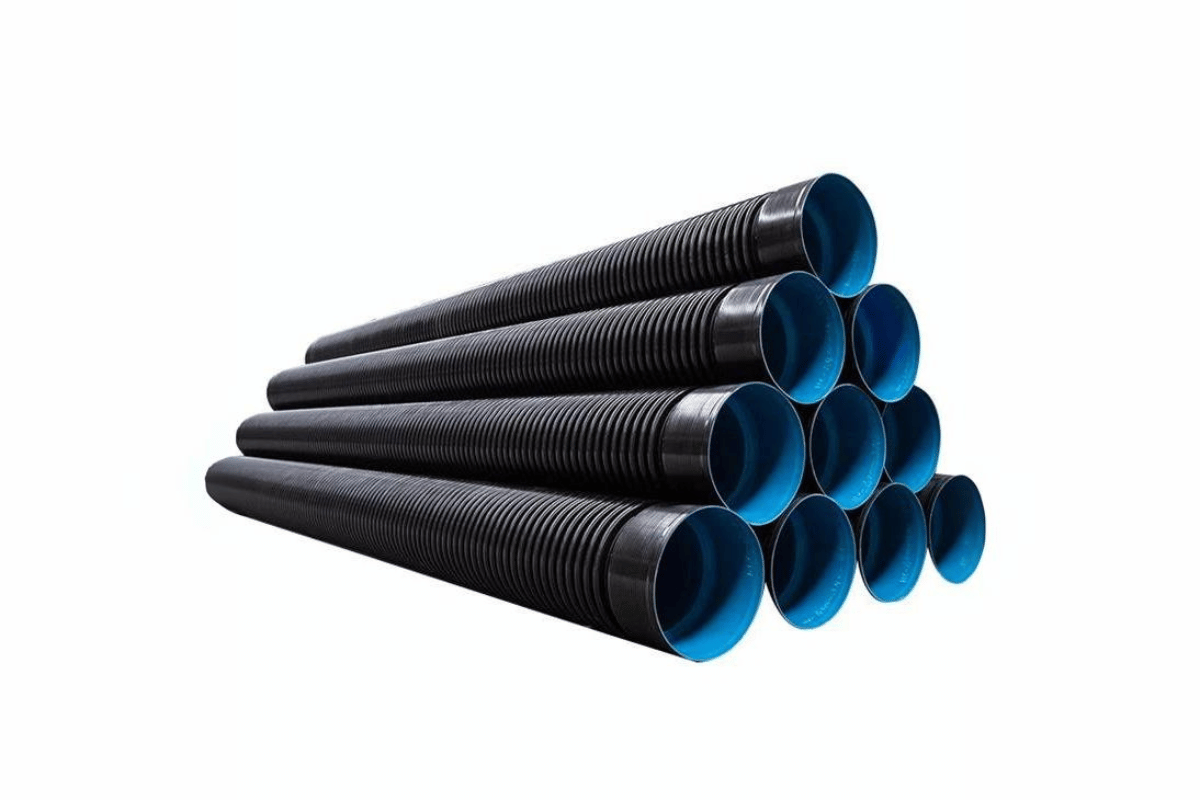
1. What are the primary benefits of using HDPE pipes over traditional materials?
HDPE pipes offer several advantages, including superior longevity, recyclability, and energy-efficient production. Their corrosion resistance ensures a long-lasting performance, which reduces maintenance and replacement costs compared to traditional materials like steel or concrete.
2. How does the use of HDPE pipes contribute to sustainability?
HDPE pipes are manufactured through energy-efficient processes that lower greenhouse gas emissions. They are also highly recyclable, reducing landfill waste by reprocessing and reusing, thus supporting a circular economy’s principles.
3. What is the expected lifespan of HDPE pipes, and what factors influence their durability?
The lifespan of HDPE pipes generally ranges from 50 to 100 years. Factors influencing their durability include the quality of installation, the environmental conditions they are exposed to, and how they are maintained over time.
4. Are there any environmental drawbacks to consider when using HDPE pipes?
While HDPE pipes have numerous environmental benefits, the main concern is the reliance on petroleum-based raw materials for production. However, advances in recycling processes mitigate this issue by minimizing the need for new raw materials.





